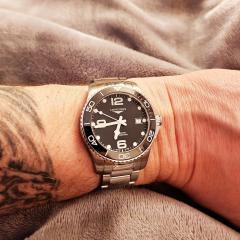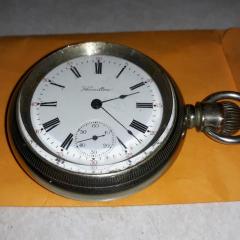Help Identifying
-
Similar Content
-
Recently Browsing
- No registered users viewing this page.
-
Topics
-
Posts
-
Here you are a video by our good friend J D Richard. https://www.youtube.com/watch?v=LMxoZjRaH50
-
By nevenbekriev · Posted
You have to push where it says 'push' with something that can enter the hole I guess -
By nevenbekriev · Posted
Nothing is lost at this stage. But You first have to take out the clutch part from the pinion. Then next is to fix the wheel table to the pinion. If it can not be riveted, then must be soldered. Then trueing, and clutch part reattaching. It is possible to make a bush that will stay press fitted between the table and the clutch and will hold tight the table in place instead soldering. -
By watchrepairIRE · Posted
Thanks again for all the help. I found a number on the movement (715) after much searching. I guess it's the below movement so I will order than and see how I get on. https://www.ronda.ch/en/productfinder/caliber/715 -
By watchweasol · Posted
Hi. Thing to do is measure the battery space. Diameter. X depth .. I have seen it listed as sr626sw. 377 measure to check then check the dimensions of the 377.
-











Recommended Posts
Join the conversation
You can post now and register later. If you have an account, sign in now to post with your account.
Note: Your post will require moderator approval before it will be visible.